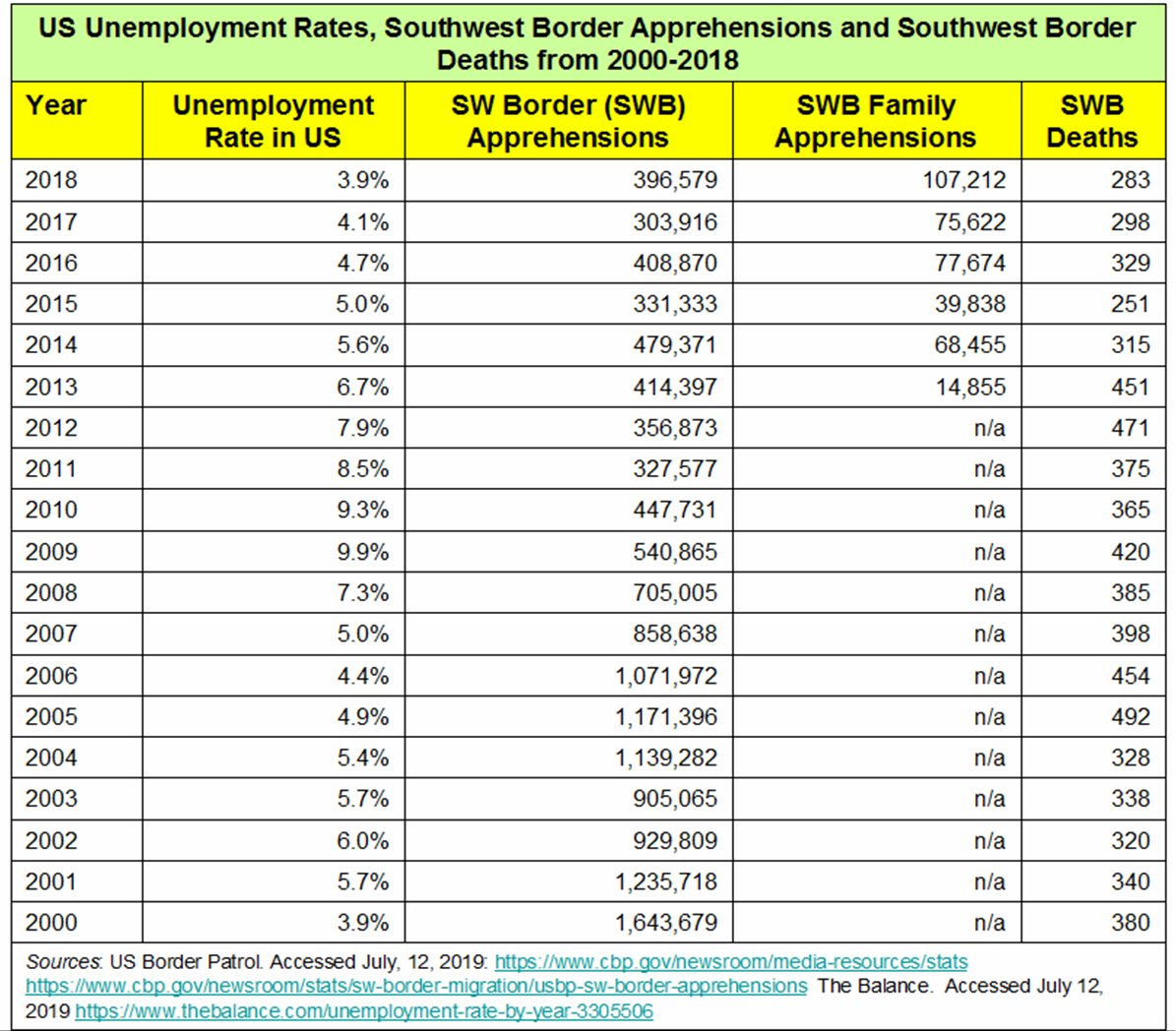I try to understand human behavior in terms of triggers and pay-offs, aka push factors and pull factors. In the case of migrants at the Southwest border, the question becomes what is pushing them out of their home countries and what is pulling them to the US. Easy: conditions in the home countries are awful and by comparison conditions in the US are rather appealing. But why do the number of SW border migrants change over time? Do the changing numbers track changing conditions at home or in the US? If not, other push/pull factors are involved.
So let’s look for some patterns. First:
The US unemployment rate clearly plays a role but it’s not consistent. Numbers of apprehended migrants dropped with the Great Recession but haven’t returned to the levels of the early aughts even though our unemployment rates have been comparable for several years. The danger of attempting the crossing (as reflected in deaths) doesn’t seem to have much effect on the numbers either. Family crossings are definitely increasing but there’s no clear correlation with US unemployment rates.
I’m going to focus on family crossings since they’re clearly on the rise. In search of push factors, let’s look at countries of origin over the last few years:
The families are mostly from Central America. Why? Have these countries become more violent? Not according to their homicide rates -which have been going down :
No doubt these Central American countries remain violent and unsafe - but the changing numbers of families leaving for the US appear unrelated to homicides rates. Guatemala in particular has seen declining homicides for a decade and has a much lower homicide rate than El Salvador and Honduras, yet the number of Guatemalan families apprehended at the border has skyrocketed over the past three years.
So we’re left with other push and pull factors yet to be revealed. My guess is that since the conditions in Central American don’t seem to be getting worse, the great increase in attempted border crossings has to do with changes in the perceived pay-off of attempting the arduous journey to America. If more people are hopeful they can get to the US without being caught or sent back, more people will try to get to the US.
So once again I’ve kicked the question down the road: why do poor Central Americans think they have a better chance now than they did a few years ago?
—
Update: Since writing this post, The Economist came out with a great article on the Southwest border crisis, which provided some insight re the increasing number of migrants at the border. To quote:
“Under international and American law, people are entitled to asylum if they face persecution in their home countries because of their race, religion, nationality, membership of a social group or political opinion. In recent years, governments and judges have expanded their understanding of what constitutes persecution. A growing number of migrants have tried to use those rights to gain admission to the United States. The share asking for asylum after being apprehended without the right documents has risen from 5% to 40% over the past decade. Many do not qualify even under an elastic definition of persecution. Central Americans are more likely to be fleeing poverty. Relatives in the United States are a big draw.”
— The Economist “Trump builds a bureaucratic wall to keep out migrants” Print Edition July 20, 2019. https://www.economist.com/the-americas/2019/07/20/trump-builds-a-bureaucratic-wall-to-keep-out-migrants


